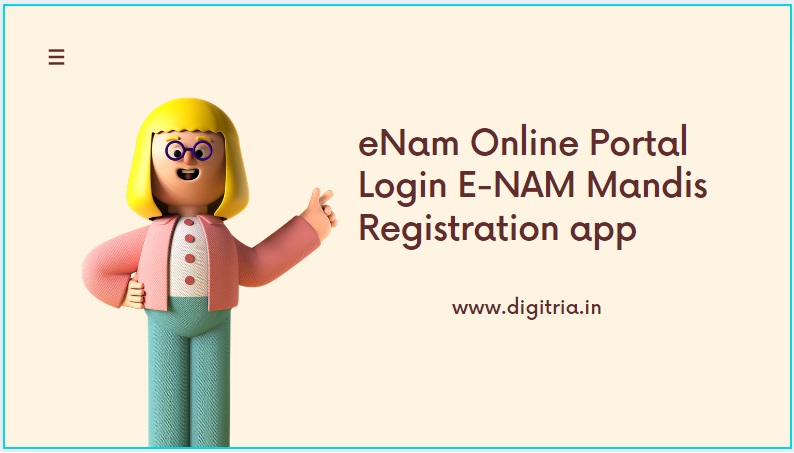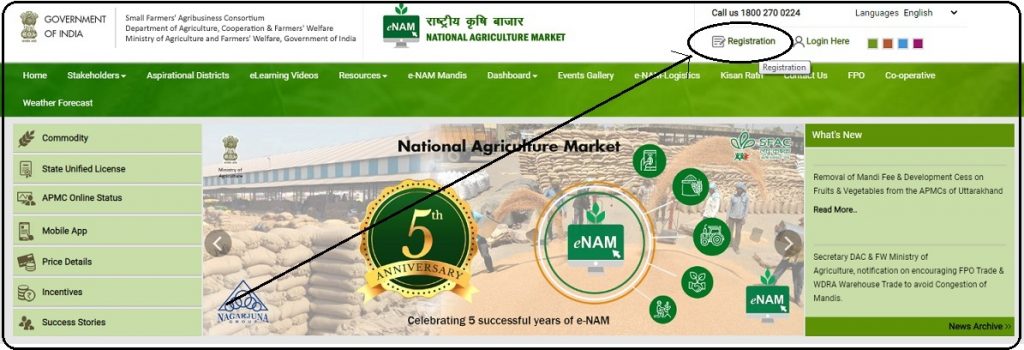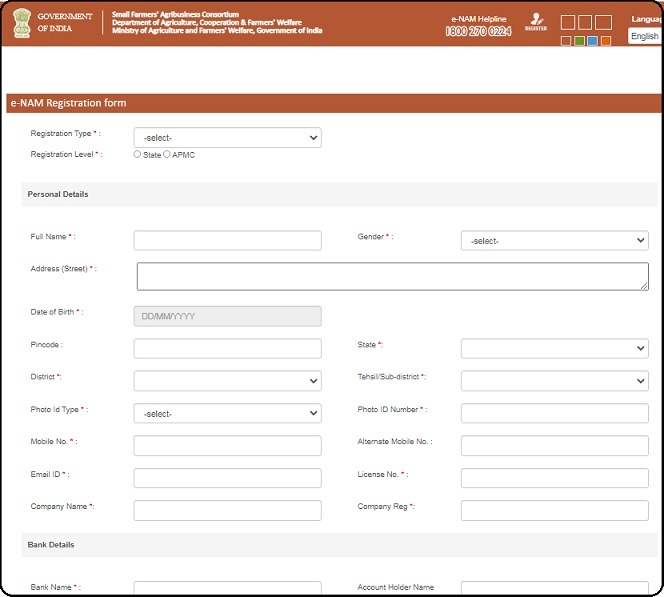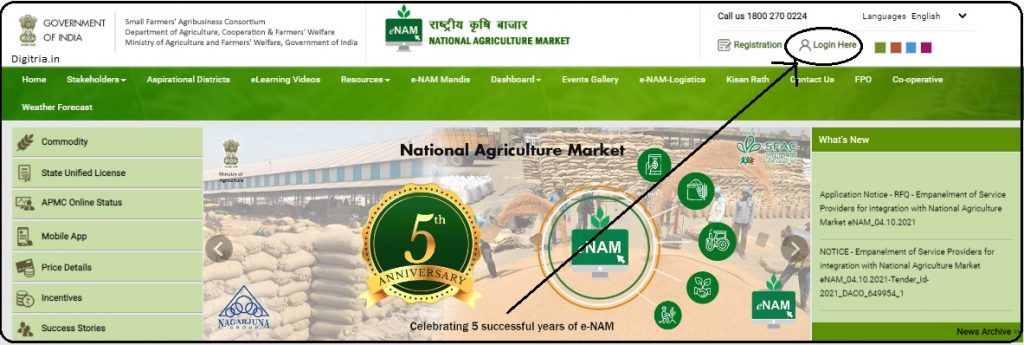eNam Portal Registration Form, Login E-NAM Mandis mobile app

eNam Portal has been launched by the Ministry of Agriculture and Farmers Welfare. The main purpose of the eNAM portal is to provide information to the farmers. It relates to the commodities and mandis. Hence, any farmer after making an enrolment on the portal can gain access to agriculture produce information. The farmer can access the other mandis and seek information on the existing commodity prices.
eNam Portal Login E-NAM Mandis Registration app
The e-NAM allows early gate entry, better sampling analysis, and an excellent assaying report. Since 2016, the eNAM platform is rigorously working for the development of the platform and on April 2nd, 2020, the portal introduces three new features. The additional features that the portal imbibes are the FPO module, warehouse (eNWR), and logistic module and it gives ample benefits to stakeholders importantly in the lockdown period. Several states have come on e-NAM platform to benefit from it. The e-NAM platform works in a manner, similar to, Flipkart, or Amazon for agricultural produce.
Birth/ Growth of electronic Agricultural Platform:
The concept of creating an online platform for the agricultural markets surfaces in the year 2011. When Sri R Ramaseshan, a former IAS officer from Karnataka began the first online agricultural platform. Sri R Ramaseshan, IAS, resigned from government services and got into NCDEX as its CEO.
On 1st February 2021, Finance minister Nirmala Sitaraman announces the connectivity of 1000 mandis under the e-NAM system. It will enhance greater transparency and competitiveness. Currently, APMC on the eNAM platform are about 1000. The central government is pushing the state government to introduce join the national agricultural market on the digital platform. This will allow farmers to have far-flung reach and not just the local APMC.
He believes that technology-led market design can interconnect different mandis online and in long run, it creates a national level market. This process will reduce the distress in the minds of farmers. The participants can be marginal farmers, small, medium, and big farmers. His action plan was adopted by Telangana in the undivided AP.
Registration at National Agriculture Market by Farmers:
The farmer must enter the details to avail the benefit of transparency in cashless transactions. The registration on this page is possible for sellers, buyer, commission agent, and service provider. It is portal connecting traders (buyers) and sellers (farmers). An interesting feature is there will not be any fee for registering on the e-NAM.
1st step: To register on the eNAM portal, Farmers must visit the official link i.e. https://enam.gov.in/web/.
2nd Step: On the Home page of the enam, the Farmers should click on the Registration link. The web portal re-directs it to the eNAM registration form page.

3rd step: A farmer must enter the data in the registration form and enter the registration type. Then, click on the select button and choose the category, seller, buyer, commission agent, or service provider. Select the state or APMC against the registration level. Once you complete registration modules, you need to fulfill the personal details like bank details, upload a copy of the passbook/ cancelled check, and scan a copy of ID proof. And, Select SMS or get an email box for receiving the acknowledgment of the registration.

4th Step: After successful completion of filling the registration form, farmers must recheck the details and click on the ‘submit button’ to submit for registration or click the ‘cancel button.’
eNam Portal Login Process:
1st Step: After successful completion of eNam Registration through the Enam portal, Farmers must come back to the home page and click on the Login link.

2nd Step: Famers must enter the User Name, Password, Language, Captcha code and click on the Login button.
Benefits for a Farmer:
1. The sellers/farmers can find complete transparency when they host their businesses on eNAM.
2. The buyers/traders can get a clear briefing of the prices on eNAM and this real-time information allows traders to learn about produce at mandis.
3. The payments are quick and this will make a fruitful financial profile for sellers.
4. The buyers can pay through e-NAM facilities such as RTGS, NEFT, and BHIM UPI. The sellers make instant payments into the sellers’ accounts.
5. The e-NAM makes an account of the arrivals and that too digitally. The e-NAM provides a unique lot id and the sellers can keep a track of the produce until it is sold.
6. The e-NAM creates a record that maintains the volume of arrivals, the particular mandi, and season.
7. The web portal provides real-time information on trade and price.
8. The farmers can find total access to the markets across the state with a click.
9. The digital web portal provides additional information such as the quality of commodities.
eNAM Process Flow:
The entry and exit of the agricultural produce of the farmers take place in a systematic manner. The presence of eNAM gives a live demonstration of the product and services that last between buyers and sellers at mandis in a physical presence. The entire transaction between the sellers and the buyers takes place in six steps.
1. The first step is gate entry and at this stage, there will be farmer registration and even the lot generation takes place.
2. In the second step, the process of assaying takes in the first place. The sampling of the products and the assaying does encounter.
3. The third step is online trading wherein the eNAM plays an active role. It describes the bid management and auction.
4. The fourth step is the weighment and invoicing which involves weighing scale and sale agreement at the agriculture market yard.
5. The fifth step is the online payment wherein it directs the buyers with the process of payments. The buyer/trader can make challan or cheque payments. During the payments, internet banking like RTGS/NEFT can produce quick financial transactions.
6. The sixth step is the Gate Exit and it symbolizes the post-trade and goods return whenever the produce quality is compromised.
Also Read: APMIP Farmer registration
